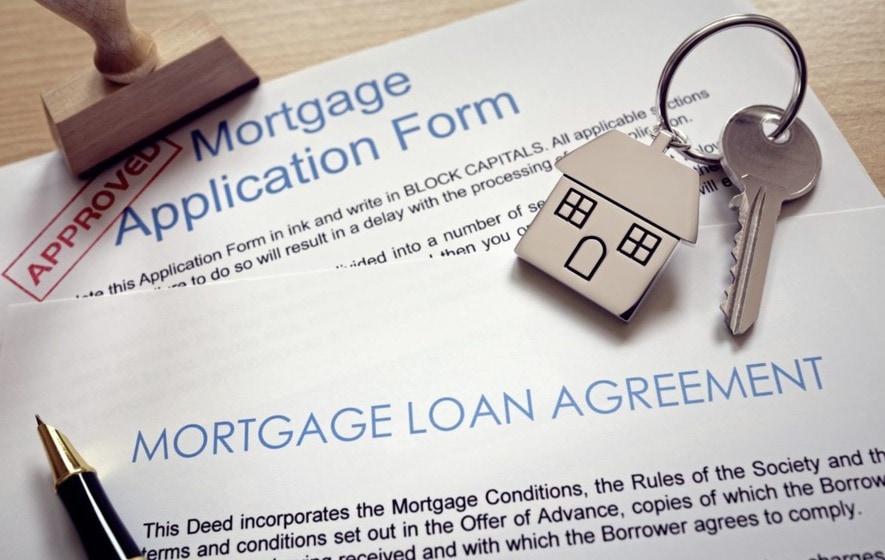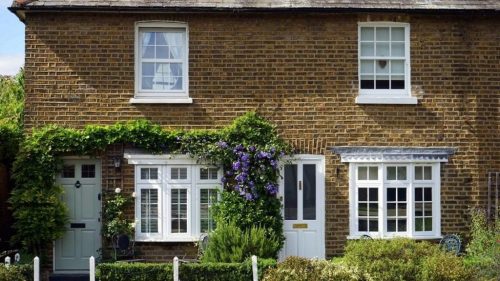How Does Unsecured Lending Work?
Whilst both secured and unsecured lending sources have been around for many years, there are numerous significant differences between these two useful sources of finance. With secured loans such as mortgages and logbook loans allowing the borrowing of larger amounts (up to millions of Pounds in some cases) and unsecured loans offering an increased degree of flexibility and convenience, it is important know the major differences between both and the benefits of using one form of a loan or another.
Unsecured loans on the other hand, including the likes of instalment loans, payday loans and many other options, allow the borrowing of smaller amounts but in a quicker time-frame than most secured loan options. Both categories of loans have their preferred uses and almost all forms of regulated loans will have their restrictions with regards to amounts that can be borrowed, credit checks and regulatory framework and underwriting procedures.
Moreover, both forms of loans are able in cases to be used for personal, business and property-related cases to different effects. For example, a bridging loan may be used for a property purchase as part of an investment portfolio, whereas mezzanine finance (a variation of bridging loan) is more likely to be used for business purposes.
It is therefore important to understand what common types of unsecured lending include as well as how and where they differ from secured loan options available in the UK.
Common Types of Unsecured Loans
Unsecured loans in principle are as simple as a prospective borrower making an application for a desired sum of money to be repaid over an agreed timeframe, with interest added; making a profit for the lender. In past years, the most common route of acquiring an unsecured loan was via one’s bank.

A conversation with the bank manager and some quick checks of one’s overall financial status was all that was needed in order to secure a much-needed loan of potentially several thousand Pounds. Nowadays however, there are more options than ever and the process differs.
Payday Loans – Perhaps the best-known and most widely recognised form of unsecured loan, payday loans have been around for quite a while. They allow a borrower to borrow a smaller amount; usually up to around £1,000 to be repaid on the next payday. These loans are often referred to as ‘emergency loans,’ as they tend to be used when un unexpected bill or expense pops up and the borrower needs to be tided over until their next payday where they will clear their debt and the interest I none go.
Instalment Loans – These loans follow a similar premise to that of payday loans in that whilst they may be of slightly larger amounts, they still tend to be smaller amounts (also up to around £1,000.) However, where these differ from payday loans is that instead of having to pay off the loan plus interest in one go, the borrower agrees with the lender to repay over a pre-agreed timeframe, which will be anywhere up to 12 months. This means that the repayments are much more manageable for the borrower as they will be repaying their debt spread over a longer time.
Guarantor Loans – Guarantor loans in themselves are nothing new. These work by the borrower being able to borrow a larger amount than instalment or payday loans as the loan amount and their debt is guaranteed by a third-party guarantor who agrees to cover the debt and repayments should the primary borrower default. This works in a similar way as having collateral on a secured loan may, in that there is a degree of security for the lender that the borrower and the lender both have fall backs in the case of missed payments. These loans allow larger amounts to be borrowed (up to around £10,000.)
What Are the Differences Between Secured and Unsecured Loans?
Whilst both secured and unsecured loans can sometimes be used for similar and sometimes even the same purposes, there are several differences between these two categories of loan which are important to be considered when making the choice of which loan and which specific type of loan to apply for:
- Security on the Loan
Arguably the most important difference between secured and unsecured loans is the very nature of both types. Secured loans require a high value asset; usually a property or vehicle to be used as collateral on the loan. This acts as a form of security meaning that if the borrower cannot repay, the lender has the power to seize the asset to recoup their costs and repay debts owed by the borrower.
- Amount Borrowed
Because secured loans have collateral, it is possible to borrow significantly more when it comes to secured options as opposed to unsecured equivalents. It is always important to know how much you can borrow when applying for any loan. For example, mortgages and bridging loans can be in excess of £10 million depending on the exact nature and value of the property or properties in question. Unsecured loans in general however, only tend to lend up to a few thousand Pounds as the risk is greater to the lender, with no security on the loan. Business loans though are different as more money can be borrowed. However, these processes are different.
- Interest on Loans
Because of the increased risk to the lender, most unsecured loans have higher interest than their secured equivalents. This is to offset the risk of the borrower potentially not paying off their debt. Secure options however, have far less risk associated with them as the borrower will agree to the lender being able to seize the asset used as collateral should they default.
- Length of Repayments
Unsecured loans for the most part are paid of within 12 months. For example, an instalment loan may be spread over the course of 12 months by which time the debt should be settled and paid off in full. However, generally, an unsecured loan will be repaid much sooner than this as the loan amount is significantly less than a secured loan (usually.) Secured loans on the other hand, such as mortgages may stretch over a number of years; sometimes more than 20 years. This is because someone borrowing say £500,000 as a mortgage will not be able to repay this in a year and will need more time to cover these costs compared with an unsecured loan of much less.
- Credit Checks
Whilst lenders now carry out credit checks and assess credit and spending behaviour for all nature of loans, secured loans will generally entail more rigorous checks as with a larger loan amount, the lender needs to be sure the borrower has the means and the credit behaviour to repay their debt. Unsecured loans such as payday loans however, do carry out credit checks but these will not be as rigorous as those for a secured loan such as a bridging loan or mortgage as the amounts of money associated are much less, making the cost of carrying out more rigorous checks less of a requirement for many.
- Property Purchases
In order to purchase a property, the vast majority of people need a mortgage or secured loan of some kind. The loan is provided and the debt is secured against the property or development in question. This is the driving force behind the lender’s provision of the loan. If the property is worth less, then less can be borrowed; the loan-to-value (LTV). However, if one doesn’t have a property with which to secure the loan, they will be unable to purchase a property in this way. For example, a tenant who rents their property from a landlord, is unable to secure a loan against their place of residence as they do not actually have ownership.
How Interest Rates Affect Mortgages
It was announced in November 2017 that the UK base rate will increase for the first time in over a decade. In July 2007, rates went up from 5.5% to 5.75%. Now, rates have risen from 0.25% to 0.5% as of 2nd November 2017. The base rate had been at a historic low since August 2016, at a rate of 0.25%. But what does this mean for interest rates on mortgages and private mortgages?
To start with, it is important to outline what the base rate is, as it affects not only mortgages but also the following:
- Loans
- Credit cards
- Savings
It is thought that credit card rates are expected to rise, as well as overdrafts and personal loans.
What is the Base Rate?
This is the official borrowing rate as designated by the Bank of England. The rate dictates what savers will earn and what borrowers will be paying. Any changes to this bate rate is dependent upon the Monetary Policy Committee (MPC) which is the Bank of England’s group that meets eight times a year in order to discuss the rate.
As a result of this recent change, it is likely that many people’s mortgages will rise in cost, whilst savers will have more chance of receiving better returns on their savings. Estimates suggest that will be around 45 million people who will receive better returns on savings accounts. For example, those who have saved £10,000 will collect £25 extra in interest each year.
How much will mortgages go up by?
This depends on the type of mortgage a home buyer has. For example, a bridging loan will be affected differently to a traditional mortgage. Currently, there are around 9.2 million people in the UK who have a mortgage, and half of those are on a tracker rate. Whatever the type of mortgage someone has, it is often the case that the bigger the deposit or equity you have, the better the interest rate.

It is also possible to check online how much extra or less will be paid as a home-owner based on the interest rate increase through using one of the interest rate or fall calculators available. These useful tools calculate mortgage amounts, the duration and the type of mortgage it is and then predicts what the increase or decrease will likely to be.
Fixed Rate Mortgages: Will Interest Rates be Increased?
94% of new homeowners are on fixed rate mortgages, lasting on average two or five years. A fixed-rate deal is when a home-owner pays a known, fixed rate for a set period of time. Overall, around 57% of homeowners are on fixed rate details. The interest rate increase will depend on when this loan is expected to end. Borrowers will likely to see no immediate increase, but at the end of their two-year fix for example, they could end up with a higher rate of repayment or a new deal that is more expensive.
However, it could be cheaper, as it does also depending on when this fixed rate mortgage was taken out, so it is important home-owners check with their lender.
Variable Rate Mortgages
35% of homeowners in the UK are on variable rates. A variable-rate deal is when lender is able to move the interest rate at their discretion. It is more likely to be the case that if the mortgage a person has hasn’t changed in at least five years that it is a variable rate mortgage. Variable rate mortgages then, have an increased chance of being affected by a rise. It is likely the rise in interest rate will mean the average home buyers mortgage (that is, the average in the UK of £175,000) will rise by roughly £22 a month.
Tracker-Rate Mortgages: Will Interest Rates Increase?
Also known as ‘base-rate trackers’ or ‘bank-rate trackers,’ they are less common as they once were amongst home-owners. Tracker-rate deals work on the basis of the rate paid moving up or down in accordance with the Bank of England’s Bank Rate. In terms of the recent interest rate increase, this means that if a home-owner paid a tracker paying a bank rate plus 1.25 percent, now the bank rate has risen to 0.5%, the mortgage will rise as a result to 2 percent.
How Does a Residents' Association Work?
Setting up a resident's association has the potential to create a real difference in your community. After all, a collective voice can be much more powerful than just one voice on its own. Amongst other things, it can enable you to address issues that are of concern to your local neighbourhood, representing a much needed 'voice' for the community, and can improve your community's overall quality of life. Residents' association can also help to create a better sense of neighbourhood community, and a greater awareness of what is going on in their local area.
It can also be an effective way for tenants to express their concerns to their landlord or managing agent.

Things to take into consideration
There are different ways in which a residents' association can be formed, but one of the most important things to take into consideration before setting up a group is the issues you want to address, such as:
- What area in your community will you cover through your association, how big will this group be?
- Will the group look at a specific issue, or look to challenge a multitude of issues
- Who will be involved?
- Are there a number of people with common issues or topics that concern them?
- How will the skills of your group be beneficial to attaining your goals?
- Will it be an informal or formal group? This will dictate how the association will be run.
- How can you get more people to get involved? You need at least three people to set up a group, gauging interest in your community is a good place to start, and seeing if locals would be interested in joining such a group.
- Will you be able to receive support and funding? This could be through local businesses as well as your local council, or perhaps through fundraising events. You could also publicise the event by producing leaflets, newsletters. It is important prior to setting up a group that you consider all the potential costs involved, such as needing to hire a meeting room.
What is the difference between an informal and formal residents' association?
As previously stated, whether you decide to make the group an informal or formal residents' association has an impact on the way in which the group will be run. If you are on a small budget, and you are looking to make small improvements to your community then an informal association may be the best option for your group, as relatively little costs are incurred in order to run one.
On the other hand, a formal residents' association tends to be a little more complicated. Why? Primarily, because there are certain stipulations and criteria involved that aren't for an informal group. Formal groups tend to be focused on more serious issues, and may form in order to represent homeowners, or leaseholders and want to be consulted on what their local council spends money in the local area. They may also:
- Exert pressure on landlords to improve living standards or to take on maintenance issues.
- Organise opposition to planning applications in the local area.
- Help to resolve disputes between residents.
How do you set up a residents' association?
If there is enough commitment in your local area to run a resident's association and you have agreed on what issues you will be tackling, you will need to do the following:
- Most importantly, set up an initial meeting with everyone concerned, and outline the aim of the meeting.
- Choose an appropriate time and place that is likely to be suitable for everyone.
- You should decide as a group how often you want meetings to take place according to the needs of the association. For example, some groups meet every two months, whilst others meet every quarter.
- It is incredibly important the minutes are kept of each and every meeting. This means that any decisions or actions are recorded. They should be written up as soon as the meeting is finished, and distributed to all concerned so they are aware of what has been decided. They may also be useful for future reference.
- A committee should be formed. This should be done so democratically in order for things to run smoothly.
- You will need to elect the following: a Chairperson, Vice-Chairperson, Secretary and Treasurer. A guide provided by Peabody outlines in detail what the responsibilities of each and every role in the committee should be, which could be helpful if you lack previous experience in setting up residents' associations.
- One of the most important steps you should take is writing up a constitution for your association, as a means of agreement as to how the group will operate. This helps to ensure accountability for everyone involved in the group. If you are unsure as to how to draw up a constitution, there are numerous template ones available, these include the Federation of Private Residents Associations (FPRA) as well as the Association of Residential Managing Agents (ARMA).
- At the end of the year, it is important to set up an Annual General Meeting (AGM), which is a review of how your residents' association is doing, as well as looking at goals for the next upcoming year. These should be held every 12-15 months.
- If you are a formal residents' association, it is important to be 'formally recognised' by your landlord or management company. For landlords, they are required by law to consult with residents association and 'recognise' the establishment of such a group. If you find that the group is refused by the landlord, you can ask a Tribunal to make a request of a 'recognised tenants' association'.
Bridging Vs Traditional Mortgages
Most people are aware of mortgages and property finance in general with mortgages having been used by millions of homeowners for many years and the concept of property finance being well-established. Everyday mortgages are generally used to secure a fixed amount of money against an agreed portion of equity of a property. Bridging loan arrangements are a more specialised process that is not as well established but that is increasing in its popularity.
Whilst traditional mortgages are usually used by homeowners to purchase or refurbish their place of residence, bridging loans are a slightly different offering and therefore may at times need a broker to facilitate its arrangement. For example, a bridging mortgage to be used for business purposes may specialised and experienced corporate finance brokers to arrange it.
Traditional mortgages on the other hand have different requirements. For example, if one is self-employed, an accountant may be required to order finances in a clear and positive way for the prospective mortgage lender to be able to understand the financial position of the applicant (source: Martin Tiano & Co Accountants).
Ultimately however, both a mortgage and a bridging loan have a very important role to play in the wider property lending industry in the UK.
Popular Types of Residential Mortgages
Unlike commercial property finance options and mortgages for buy-to-let purposes, residential mortgages and mortgages for peoples’ main place of residence are deemed Regulated Mortgage Contracts which means that for the most part, their repayment and interest terms are much more favourable as they are designed for a borrower’s main place of residence as opposed to for investment purposes.
Commercial and buy-to-let arrangements on the other hand will have additional arrangement fees, interest payments and clauses; all of which tend to add up, increasing repayment costs.
Everyday Mortgages

Mortgages are the most utilised form of secured property finance in the UK and arguably the world. Usually used in order to purchase a property, the premise of a mortgage is quite simple. The borrower finds a property they desire to buy and assess their income and savings. They will likely need to be able to put down a deposit, which will be a percentage of the property’s value, for example 40%.
Then, they apply for a mortgage with a bank or other lender or broker who will assess their finances, income and financial stability. All criteria being satisfied, the lender will then agree to lend a proportion of the property’s value, for example the remaining 60% plus interest to be repaid over a predetermined period of time. With mortgage amounts often being in the hundreds of thousands of Pounds, it is not uncommon for a mortgage to be repaid over a period of 10 years or more.
The interest on the mortgage is variable too and there are numerous arrangements that can be agreed:
- Tracker Mortgages...
These are mortgages where the interest rate is determined by the Bank of England base rate. This is set by the Bank of England and is subject to change during the year. In effect, if the Bank of England raises interest rates, this will be reflected in the required payments and interest amount on mortgage repayments.
- Fixed Interest...
This is where the borrower and the lender agree to fix the interest rate for an agreed period of time; usually few years. The benefit of these types of arrangements is that should the interest rate be agreed at say 0.25% and the Bank of England then raises rates to 0.5%, the borrower’s interest will remain at the fixed amount for the agreed period of time, after which they may revert to the current interest rate or remortgage. However, a drawback of these types of interest arrangements is that should the interest rate be lowered, the mortgage’s interest will remain fixed too.
- Interest Only Repayments...
These are somewhat less common but they are used. In these cases, the borrower would only repay the interest each month, having to then repay the outstanding balance; the actual loan amount in full at the end of the mortgage’s term. These are often used by those awaiting the sale of a high value asset to cover the repayment amount.
Bridging Mortgages

Bridging loans are different to traditional mortgages in that they are a much shorter term financial arrangement. Also secured against a property, a bridging loan is often used to purchase a property whilst an initial property’s sale is impending or in the process of going through.
For example, a homeowner may be looking to upsize their home and move to a larger property. Having found the property they wish to move to and having put down a deposit on it, they may run into fairly short-term issues. For example, they may have found a buyer who then pulls out of the process late on, breaking the sales ‘chain’ and leaving the current owner in the lurch, having to find a new buyer quickly to avoid losing a deposit of potentially many thousands of Pounds.
In such cases, a bridging loan can be taken out. The homeowner would use the bridging loan to buy their desired property, awaiting the sale of the first one. There is then a period where they effectively own two properties, but once the buyer of the first one is secured and confirmed, the sale amount is used to pay off the majority of the bridging loan, whilst any remaining repayment amount is paid off via the remortgaging of the new property at a much lower rate than the bridging loan.



